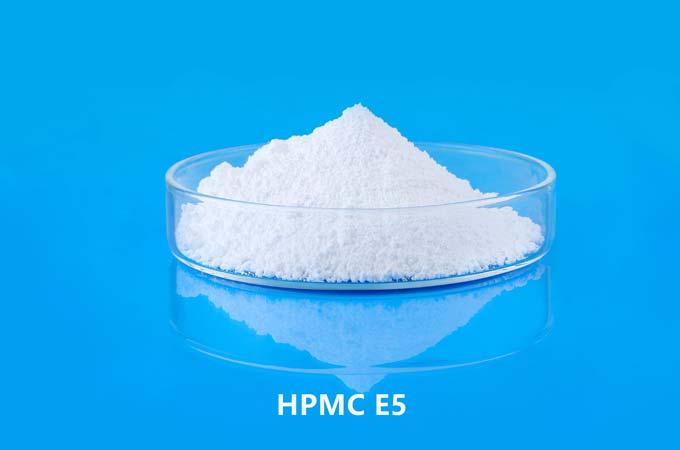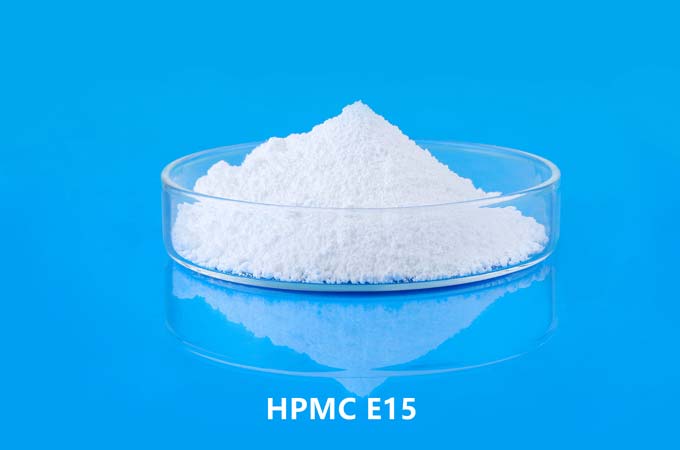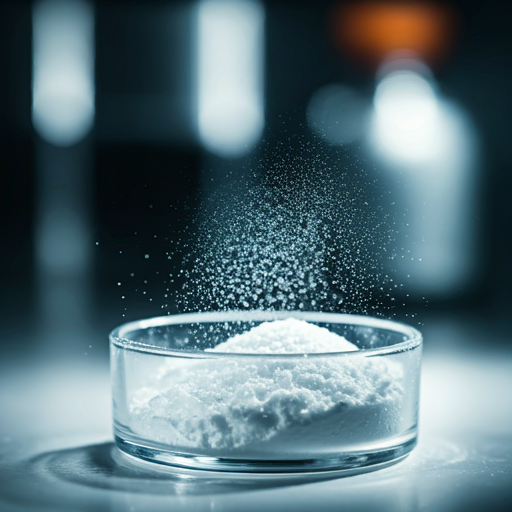Hydroxypropyl Methylcellulose (HPMC) is a versatile cellulose ether used across a wide range of industries, from construction to pharmaceuticals and personal care. Different grades of HPMC, such as E5 and E15, are formulated to meet the specific needs of these sectors. This article explores the various grades of HPMC, focusing on their unique properties and applications, with a particular emphasis on the differences between HPMC E5 and E15.
The Different Grades of HPMC
Construction Grade HPMC
Designed for use in construction materials like tile adhesives, cement-based mortars, and gypsum plasters, this grade enhances workability, water retention, and adhesion. Its thickening and rheology-modifying properties contribute to smoother application and improved mechanical performance in building projects.
Pharmaceutical Grade HPMC
Meeting stringent quality and safety standards, pharmaceutical-grade HPMC is used in drug formulation and delivery. It is commonly found in controlled-release systems, coating materials for tablets, and as a binder for granules. Its low-viscosity properties make it ideal for encapsulation and bioadhesive applications.
Personal Care Grade HPMC
This grade is formulated for use in cosmetics and personal care products like shampoos, lotions, and creams. Its film-forming ability, emulsifying properties, and ability to stabilize formulations enhance the performance and sensory experience of these products.
Food Grade HPMC
Certified safe for food applications, this grade serves as a thickener, stabilizer, and emulsifier in a variety of food products. Its heat stability and water-binding capacity make it a preferred choice for gluten-free formulations, bakery items, and ready-to-eat meals.
Industrial Grade HPMC
Used in coatings, adhesives, and specialty chemicals, industrial-grade HPMC provides excellent film-forming, binding, and water retention characteristics. Its chemical stability and compatibility with other materials make it suitable for a range of technical applications.
Tailored Solutions for Diverse Needs
Each grade of HPMC is precisely formulated to deliver optimal results for its specific application. By selecting the appropriate grade, industries can enhance the performance, efficiency, and reliability of their products, ensuring compliance with technical and regulatory standards.
What Is HPMC E5
HPMC E5 is a specialized grade of Hydroxypropyl Methylcellulose (HPMC), a water-soluble cellulose ether renowned for its versatile properties. Characterized by its low viscosity, typically around 5 mPa·s, HPMC E5 is primarily classified as a pharmaceutical grade. In the pharmaceutical industry, it plays a critical role as a binder and film-forming agent, particularly in tablet coatings. Its unique viscosity profile allows for efficient processing and formulation, ensuring the stability and controlled release of active ingredients. Additionally, HPMC E5 is valued for its compatibility with a range of excipients, enhancing the performance of various oral dosage forms.

What Is HPMC E15
HPMC E15 is a grade of Hydroxypropyl Methylcellulose (HPMC) with moderate viscosity, typically around 15 mPa·s. It is commonly used in the pharmaceutical, food, and cosmetic industries, where its properties are leveraged for specialized applications. In pharmaceuticals, methocel E 15 is particularly effective in controlled-release formulations, where it helps to regulate the release rate of active ingredients in tablets and capsules. Its higher viscosity compared to HPMC E5 allows for the creation of thicker films, improving tablet stability and enhancing performance in sustained-release drug delivery systems. Additionally, in personal care formulations, it is used to enhance the texture, stability, and performance of creams, lotions, and gels.

What Is The Difference Between HPMC E5 and E15
The differences between HPMC E5 and HPMC E15 are significant, and these differences stem from their varying viscosities, which influence their performance in different applications.
1. Viscosity and Rheological Properties
HPMC E5 has a low viscosity, typically around 5 mPa·s. This makes it suitable for applications where thinner films or faster dissolution is needed. The low viscosity allows for easy processing and is ideal for formulations where quick release and fluid consistency are required. In contrast, HPMC E15 has a moderate viscosity, typically around 15 mPa·s, which is three times higher than that of HPMC E5. The increased viscosity means HPMC E15 is more capable of forming thicker films and providing better structural stability. This is particularly useful in applications that require more controlled or sustained release.
2. Pharmaceutical Applications
HPMC E5 is commonly used in fast-dissolving tablets, film coatings, and as a binder in immediate-release formulations. Its low viscosity ensures that it dissolves quickly, making it ideal for tablets that need to break apart or release their contents rapidly after ingestion. HPMC E5 is also used in formulations where a smooth and thin coating is necessary for aesthetic or functional purposes. On the other hand, due to its moderate viscosity, HPMC E15 is used in controlled or sustained-release formulations. It forms thicker, more durable films that slow down the release of the active pharmaceutical ingredient (API) over time. This is ideal for extended-release tablets or capsules, where the goal is to release the drug gradually to maintain a steady therapeutic effect. HPMC E15 is also used as a binder in matrix tablets where a slower dissolution profile is required.

3. Film-Forming Properties
The low viscosity of HPMC E5 allows for the formation of thin, smooth films that dissolve quickly. This property is advantageous when a rapid disintegration rate is needed, such as in immediate-release dosage forms. However, the thinner film may not provide long-term stability in controlled-release formulations. While HPMC E15, with its higher viscosity, forms thicker, more robust films, which are essential in controlled-release applications. The thicker films created by HPMC E15 act as a barrier, slowing the release of the active ingredient and ensuring a gradual dissolution, which is critical for sustained-release formulations.
4. Applications in Personal Care and Cosmetics
In the personal care and cosmetics industries, HPMC E5 is used in products such as shampoos, conditioners, and lotions. Its low viscosity provides a smooth, light texture, making it ideal for formulations that require a fluid consistency or easy spreadability. It also serves as a stabilizer in emulsions, ensuring uniformity and preventing ingredient separation. Because of the higher viscosity, HPMC E15 used in thicker personal care products, such as creams, gels, and body lotions, where a heavier texture is desired. Its ability to stabilize emulsions and provide a smooth, long-lasting feel on the skin makes it a preferred choice for moisturizing and anti-aging formulations.
5. Solubility and Dissolution Behavior
HPMC E5 dissolves rapidly in water and exhibits a quick dissolution profile, making it suitable for products that require rapid release or fast hydration, such as in instant beverages or fast-dissolving pharmaceuticals. But HPMC E15 dissolves at a slower rate compared to HPMC E5, which allows it to form stable, thick films that control the rate of dissolution in controlled-release pharmaceutical systems. This slower dissolution characteristic is critical for achieving sustained or prolonged therapeutic effects.
6. Impact on Drug Release
In pharmaceutical formulations, HPMC E5 supports immediate release, as it allows for the rapid release of the active ingredient. This is ideal for medications that require quick absorption into the bloodstream, such as pain relievers or cold medications. While HPMC E15, with its higher viscosity, is used for controlled-release formulations where the goal is to maintain a consistent release of the drug over an extended period. This can be beneficial for chronic conditions where maintaining steady blood concentrations of a drug is essential.
| Property | HPMC E5 | HPMC E15 |
| Viscosity and Rheological Properties | Low viscosity (~5 mPa·s), ideal for fast dissolution and fluid consistency | Moderate viscosity (~15 mPa·s), suitable for thicker films and controlled release |
| Pharmaceutical Applications | Fast-dissolving tablets, immediate-release formulations, film coatings | Controlled/sustained-release tablets, extended-release formulations, matrix tablets |
| Film-Forming Properties | Thin, smooth films that dissolve quickly; ideal for rapid disintegration | Thicker, more durable films that slow dissolution for gradual release |
| Applications in Personal Care and Cosmetics | Used in fluid products like shampoos, conditioners, lotions, where light texture is required | Used in thicker products like creams, gels, and body lotions, providing stability and longer-lasting texture |
| Solubility and Dissolution Behavior | Rapid dissolution in water; suitable for fast hydration and immediate-release | Slower dissolution rate; forms stable films for sustained or controlled release |
| Impact on Drug Release | Supports immediate release for fast absorption, ideal for medications like pain relievers | Supports controlled release, ideal for chronic conditions requiring sustained drug release |
Conclusion
The development of HPMC has evolved significantly to cater to the increasingly specific demands of various industries. Initially used as a general-purpose binder and film-forming agent, HPMC has seen advancements in its formulation to produce grades like E5 and E15, each engineered with distinct viscosity profiles to address particular needs. HPMC E5, with its low viscosity, is ideal for applications requiring rapid dissolution and smooth, thin coatings, while HPMC E15’s higher viscosity is optimized for controlled-release formulations and thicker, more stable films. Over time, the continued refinement of HPMC has expanded its application scope, particularly in the pharmaceutical and personal care industries, where precision in drug delivery systems and formulation textures is critical. The ongoing development of HPMC ensures that it remains a cornerstone in modern product development, offering enhanced performance, stability, and customization for a wide array of technical and regulatory requirements.
 English
English 日本語
日本語 français
français Deutsch
Deutsch Español
Español italiano
italiano русский
русский português
português العربية
العربية Türkçe
Türkçe Nederland
Nederland






